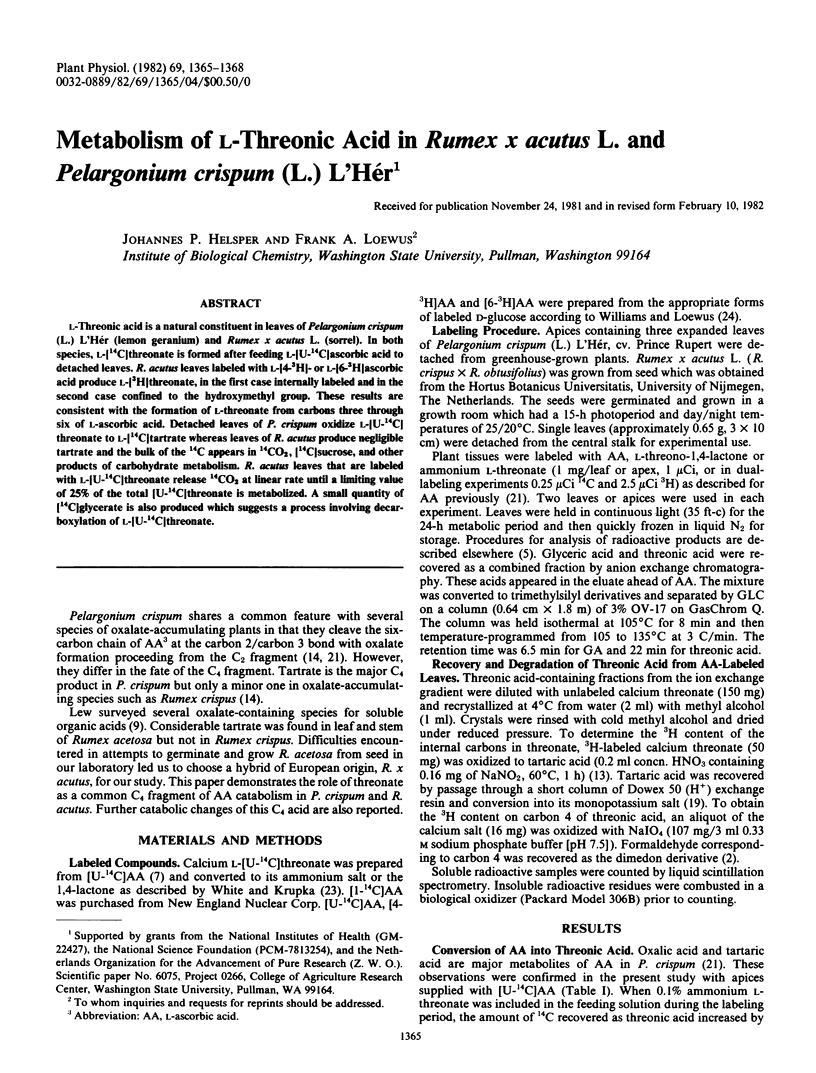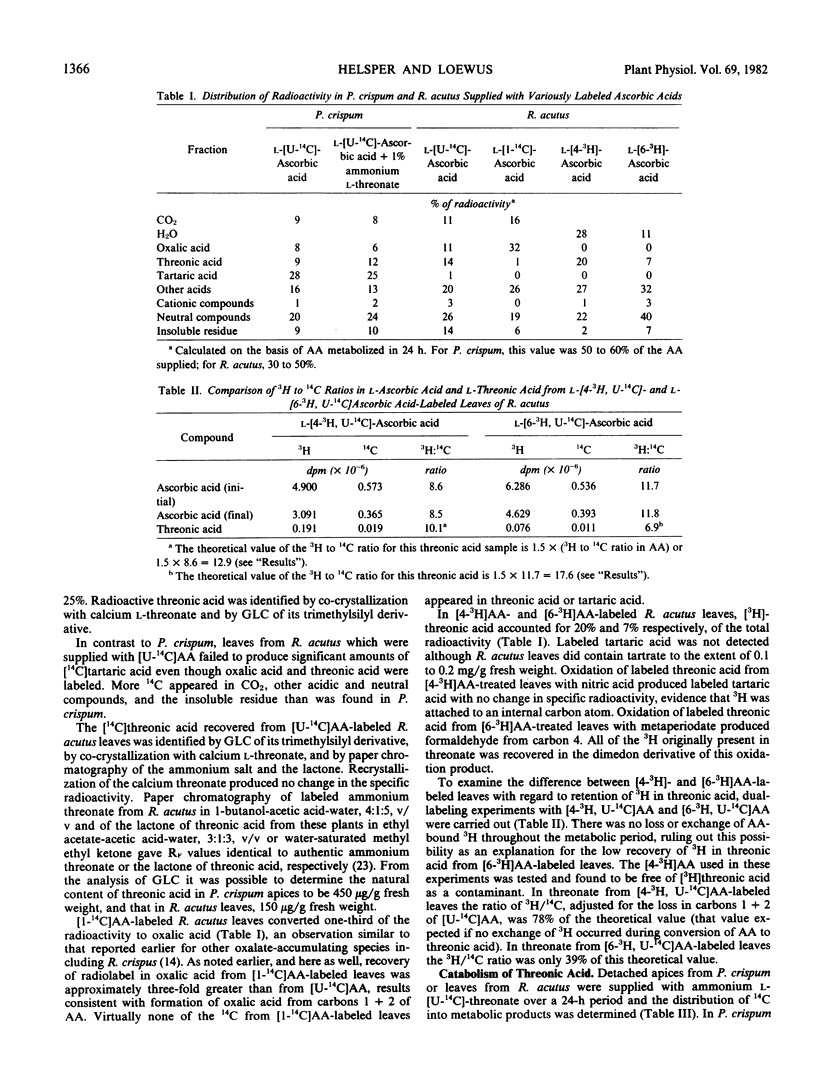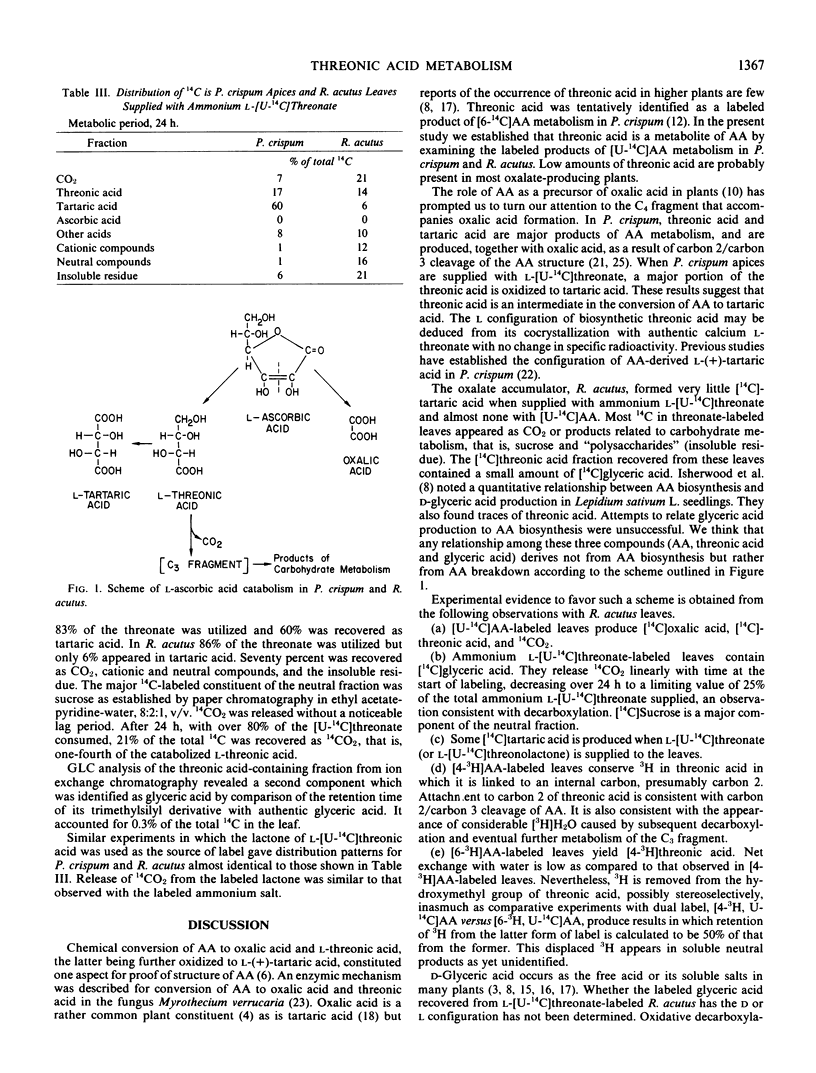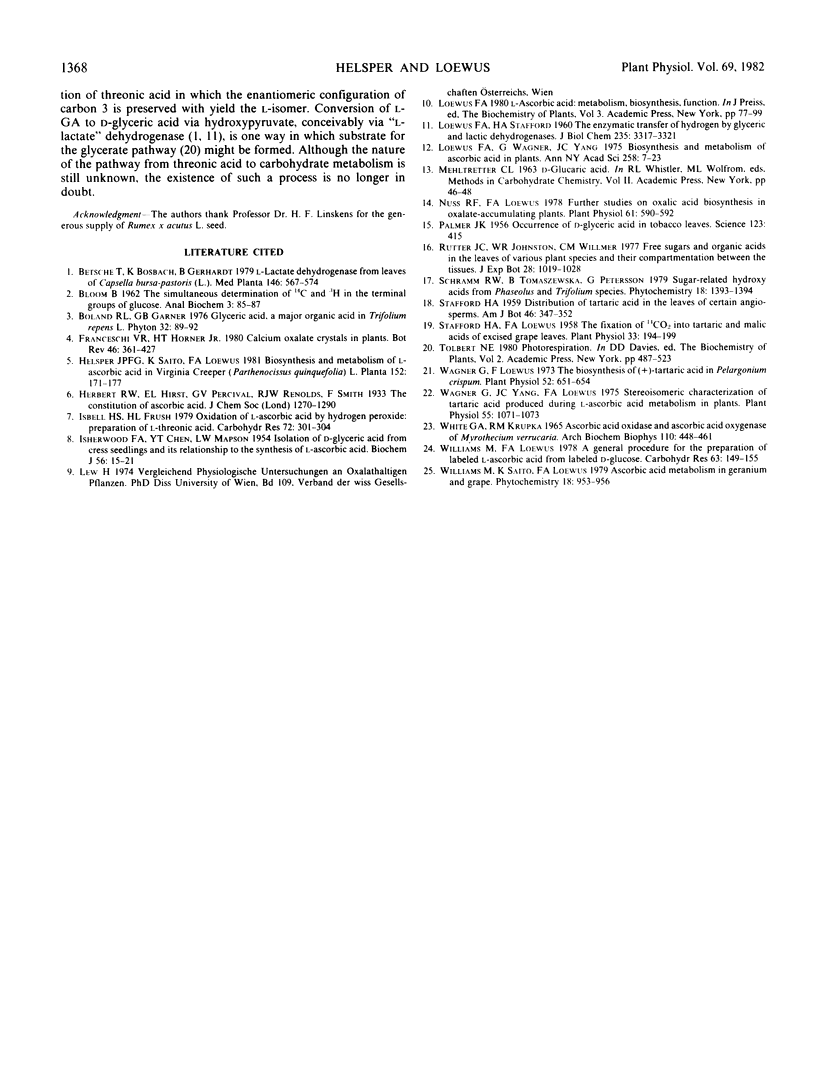Abstract
l-Threonic acid is a natural constituent in leaves of Pelargonium crispum (L.) L'Hér (lemon geranium) and Rumex x acutus L. (sorrel). In both species, l-[14C]threonate is formed after feeding l-[U-14C]ascorbic acid to detached leaves. R. acutus leaves labeled with l-[4-3H]- or l-[6-3H]ascorbic acid produce l-[3H]threonate, in the first case internally labeled and in the second case confined to the hydroxymethyl group. These results are consistent with the formation of l-threonate from carbons three through six of l-ascorbic acid. Detached leaves of P. crispum oxidize l-[U-14C] threonate to l-[14C]tartrate whereas leaves of R. acutus produce negligible tartrate and the bulk of the 14C appears in 14CO2, [14C]sucrose, and other products of carbohydrate metabolism. R. acutus leaves that are labeled with l-[U-14C]threonate release 14CO2 at linear rate until a limiting value of 25% of the total [U-14C]threonate is metabolized. A small quantity of [14C]glycerate is also produced which suggests a process involving decarboxylation of l-[U-14C]threonate.
Full text
PDF



Selected References
These references are in PubMed. This may not be the complete list of references from this article.
- BLOOM B. The simultaneous determination of C14 and H3 in the terminal groups of glucose. Anal Biochem. 1962 Jan;3:85–87. doi: 10.1016/0003-2697(62)90048-9. [DOI] [PubMed] [Google Scholar]
- HEPPEL L. A., ORTIZ P. J., OCHOA S. Small polyribonucleotides with 5'-phosphomonoester end-groups. Science. 1956 Mar 9;123(3193):415–416. doi: 10.1126/science.123.3193.415-a. [DOI] [PubMed] [Google Scholar]
- ISHERWOOD F. A., CHEN Y. T., MAPSON L. W. Isolation of D-glyceric acid from cress seedlings and its relationship to the synthesis of L-ascorbic acid. Biochem J. 1954 Jan;56(1):15–21. doi: 10.1042/bj0560015. [DOI] [PMC free article] [PubMed] [Google Scholar]
- LOEWUS F. A., STAFFORD H. A. The enzymatic transfer of hydrogen by glyceric and lactic dehydrogenases. J Biol Chem. 1960 Nov;235:3317–3321. [PubMed] [Google Scholar]
- Loewus F. A., Wagner G., Yang J. C. Biosynthesis and metabolism of ascorbic acid in plants. Ann N Y Acad Sci. 1975 Sep 30;258:7–23. doi: 10.1111/j.1749-6632.1975.tb29265.x. [DOI] [PubMed] [Google Scholar]
- Nuss R. F., Loewus F. A. Further Studies on Oxalic Acid Biosynthesis in Oxalate-accumulating Plants. Plant Physiol. 1978 Apr;61(4):590–592. doi: 10.1104/pp.61.4.590. [DOI] [PMC free article] [PubMed] [Google Scholar]
- Stafford H. A., Loewus F. A. The Fixation of CO(2) into Tartaric and Malic Acids of Excised Grape Leaves. Plant Physiol. 1958 May;33(3):194–199. doi: 10.1104/pp.33.3.194. [DOI] [PMC free article] [PubMed] [Google Scholar]
- Wagner G., Loewus F. The Biosynthesis of (+)-Tartaric Acid in Pelargonium crispum. Plant Physiol. 1973 Dec;52(6):651–654. doi: 10.1104/pp.52.6.651. [DOI] [PMC free article] [PubMed] [Google Scholar]
- Wagner G., Yang J. C., Loewus F. A. Stereoisomeric Characterization of Tartaric Acid Produced during l-Ascorbic Acid Metabolism in Plants. Plant Physiol. 1975 Jun;55(6):1071–1073. doi: 10.1104/pp.55.6.1071. [DOI] [PMC free article] [PubMed] [Google Scholar]
- White G. A., Krupka R. M. Ascorbic acid oxidase and ascorbic acid oxygenase of Myrothecium verrucaria. Arch Biochem Biophys. 1965 Jun;110(3):448–461. doi: 10.1016/0003-9861(65)90436-4. [DOI] [PubMed] [Google Scholar]


